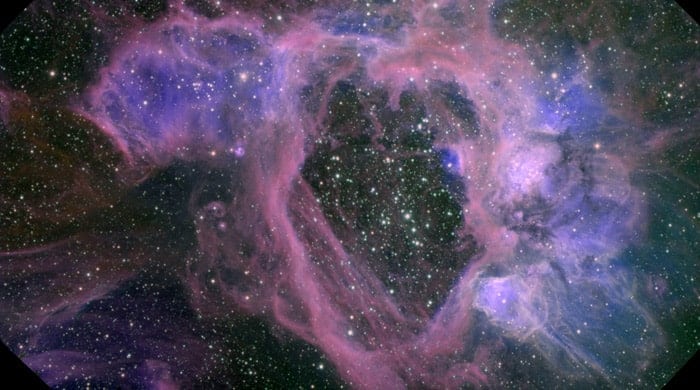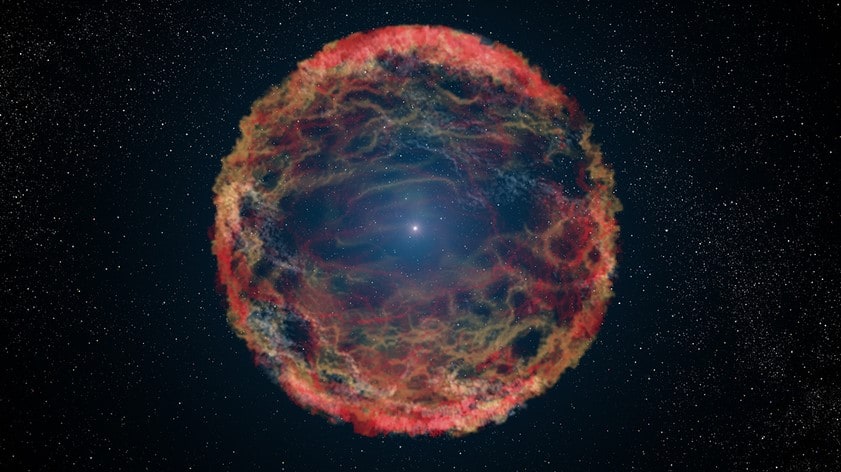
Machine learning has been used to characterize the heavy elements that the first stars in the universe passed on to their immediate successors after they exploded in supernovae. This cosmic inheritance of elements was studied by researchers affiliated with the Kavli Institute for the Physics and Mathematics of the Universe in Tokyo, who have found evidence that most of the first generation of stars in the universe existed in systems of two or more stars.
The first generation of stars in the universe formed from material provided directly from the Big Bang – which was almost exclusively hydrogen and helium. Believed to be massive and short-lived, these stars created heavier elements (called “metals” by astronomers) when the stars exploded as supernovae. This material then formed the building blocks of the second generation of much longer-lived stars – some of which survive to this day in the Milky Way. While these stars contain more heavier elements than the first generation, they are still described as “extremely metal poor”.
Previous computer simulations have suggested that many first-generation stars existed in groups of two or more, but until now there has been no observational evidence of this multiplicity. Now, the Kavli team has used a machine learning system to analyse the metal content of about 460 second-generation stars that were observed by the Prime Focus Spectrograph on Japan’s Subaru Telescope in Hawaii. These spectral data contain information about the elemental makeup of the stars and the supernovae that provided the material for their formation.
Simulated supernovae
The data were analysed using a machine learning algorithm that was created by Tilman Hartwig of the University of Tokyo. Machine learning is a type of artificial intelligence (AI) and the system was trained using thousands of simulations of first-generation supernovae over a wide range of stellar masses and explosive energies. These simulations used a nucleosynthesis model to predict the elemental production of each type of supernovae. The algorithm was then able to determine whether a second-generation star was created with the output of one supernova or of several supernovae.
“We found that the majority (68%) of second-generation stars were enriched by multiple supernovae from the first stars, by analysing the chemical compositions of the observed second-generation stars,” explains team member Chiaki Kobayashi of the Centre for Astrophysics Research at the UK’s University of Hertfordshire. “Our findings mean that at the beginning of the universe, the first stars formed in a multiple star system or in a cluster of stars, which was indicated in theoretical simulations, but has never been confirmed with observations before.”
“Light elements such as carbon and nitrogen can be produced in low-mass stars like the Sun, but the majority of elements such as oxygen and iron are produced by supernovae. The latest research also suggests that the heaviest elements such as gold and uranium are also produced by supernovae,” she explains. “These elements are distributed from star-forming regions to interstellar medium by supernova explosions. This process can trigger or can suppress the formation of the next generation of stars, and therefore supernovae are important for the entire history of galaxies.”
Stellar birth and death
Miho Ishigaki, who is also at the University of Tokyo adds that the conventional approach to interpreting the elemental abundances in star is to fit the data to a model that describes the output of a single star that has undergone a supernova. This assumes that only one supernova is responsible for producing the metals in a given extremely metal-poor star.

Supernova sediments still rain down on Earth and the Moon
“If more complex situations, such as the multiple supernovae enrich the next generation of stars, it is not possible to constrain the models with confidence given limited data,” she says, which is why the team turned to machine learning. “The machine learning approach is an efficient way of interpreting those data taking into account complex theoretical models. Such an AI-based approach will be more important in the next decade when more data from upcoming astronomical surveys become available,” she explains.
Kobayashi adds, “I can now imagine lots of bright stars forming together, which can speed up galaxy formation and chemical enrichment of the universe. This idea is consistent with what we are seeing with the latest results from James Webb Space Telescope.”
Kobayashi says that the team will next investigate is how many supernovae on average enriched the second generation of stars, a study that will require more accurate observational data.
The research is described in The Astrophysical Journal.
